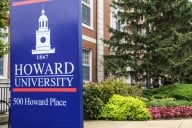You have /5 articles left.
Sign up for a free account or log in.
It’s time for a new metaphor for higher education. If, like me, you are tired of hearing the academy referred to as an ivory tower, cringe at the description of the disciplines within higher education as silos, and resist the idea of higher education as just another consumer-oriented business, let me suggest the following. How about higher education as a community greenhouse?
Why a community greenhouse? A greenhouse is a protected environment where individuals can grow unique, delicate and beneficial vegetation that may not flourish in a more general environment. A community greenhouse enables all members of the community to partake in the advantages that emerge from the plant life that is cultivated within that protected environment. The quality of the lives of the community members are enriched because of the creations that materialize from the endeavors of academics who dedicate their lives to specialized studies within the community greenhouse.
The era of the academy as an ivory tower is over and yet, there are components of this metaphor that remain salient. This metaphor brings to mind images of scholars protected from the environment around them, free to engage in their intellectual pursuits, afforded a broad view of the world from atop their lofty perch. The public has historically placed confidence in the work of academics because of the notion that the ivory tower produced an objective view; there was a purposeful separation between members of the academy and the world around them. This separation appeared necessary to address issues of the public good in an unbiased manner.
Now public sentiment criticizes the academy precisely because of the distance this metaphor depicts between us and the rest of society. I believe we should reject this metaphor because it denies the genuine connections academics make with other individuals within our society and the contributions they make to the welfare of these individuals.
True, at times our work does require protection from the elements of our environment. It sometimes requires distance from the economic, political and social forces that often change abruptly, and not always for the better, and can readily damage the potential benefit held in the saplings of our scholarship. Even the hardier vegetation that has borne fruit over time can be endangered without proper care and the right mix of nutrients for continued growth.
A community greenhouse environment provides this protection and, even more importantly, acts as an impetus for greater growth and development of our intellectual pursuits. The walls, rather than being solid stone, are transparent, allowing sunlight to permeate to nourish our plants. The ceiling is not dark and dank, but is covered with sprinklers and vents, allowing moisture and air to nurture our greenery.
The view from a community greenhouse may not be as lofty as the one from an ivory tower, but it is more realistic. The transparency of the walls permits academics to look out on their world and understand their place within it, rather than from above it. Perhaps more importantly, the clear walls allow others to see in. The doors on the greenhouse are not bolted; there are no moats or drawbridges around the structure. The greenhouse is for the community and community members are encouraged to come in to hear lectures, see performances, and engage with faculty in examining the world we co-inhabit. Students are welcomed year after year to immerse themselves in the beauty and richness of the community greenhouse. Families of students and alumni must be openly received and invited to partake in the fruits of labor of the members of the academy.
Many of the problems with the metaphor of the academy as an ivory tower are also present in the metaphor of the academy as a set of disciplinary silos. This symbolism also conjures up notions of protection and separation. The walls of the silos are impenetrable, the wealth of scholarly vegetation locked inside, unavailable to the surrounding community. Further, the image of silos signifies a distance and lack of sharing among members of the academy themselves. The symbol depicts academics as narrowly focused and consumed by turf battles and intellectual greed.
Yet, there are some positive components of the silo metaphor that can be encompassed in the community greenhouse. The specialized focus put forth by the silo metaphor has its advantages. Individuals who specialize in the study of precise and detailed topics undoubtedly create knowledge and value for all of society. The neurosurgeon who specializes in a particular procedure for individuals with traumatic brain injuries. The photojournalist who devotes her whole life to the pursuit of capturing human emotions to communicate the stories of individuals with people around the world. The engineer who develops safer, more stable construction methods for our air travel. Are we not better off because of the specialization each of these individuals has undertaken and sustained?
Similarly, the specialized focus that many, but certainly not all, academics maintain in their scholarly pursuits is vital to yield many future gains. It may not be immediately evident what the outcomes will be, but without individuals willing to devote their attention, for years on end, to the lifecycles of specific amphibians, to the long-term trends in economic markets, or to the behavior of rodents under strictly specified conditions, many great discoveries that could benefit the community would never be made. The intense focus with which these academics labor may appear narrow to some but it affords them the opportunity to commit themselves to seeing their work to fruition. In the community greenhouse, they are free to pursue this specialized study and to better resist distractions from their work, temptations to distort their scientific aims, or the pull of the market forces to value short-term gains over long-term investments.
The community greenhouse environment safeguards academics and their work, enabling them to specialize and share the ideas they harvest with other academics who, in turn, build upon those ideas in the creation of new knowledge.
This is not to say that academics shouldn’t try to expand their understanding of the world around them. We have all known academics who seem a bit out of touch with “the real world,” who don’t understand the pressures their students are under, or who don’t appreciate the work world those students will enter. While a narrow focus can be beneficial for discovery, a broader view is often needed for the dissemination of knowledge learned through those discoveries and, equally important, for receiving knowledge about the world around us from others.
Many academics, working across disciplines in teams, are addressing “real world” problems and discovering crossbreed shoots of knowledge to share with each other, their students, and the rest of the community. The community greenhouse environment encourages cross-disciplinary work and the training of students in interdisciplinary fields. Several problem-based work areas are set up in the community greenhouse with academics working in close proximity not only with each other, but with students and community members. The value of the rich exchange of new hybrids given to community members in return for input and feedback on what works best in the outside community cannot be overestimated. Many academics leave the borders of the greenhouse to explore and bring back vital information to further their research and teaching. Many venture into the larger community to plant new growth there, in the hope that it will flourish outside of the community greenhouse environment.
The notion of bringing the academy into the “real world” has led a number of individuals to promote the metaphor of the academy as a business. This symbolism creates an image of academics as producers of knowledge, with the community and students their primary consumers. A greater accountability to the public at large is called for through cost studies outlining the success of research endeavors, outcomes testing for students graduating from higher education institutions, and pressure to limit or eliminate tenure for academics.
Many members of the academy balk at the idea of education as a business, particularly at the notion of profit as the bottom-line. They resist the idea that knowledge is a commodity acquired simply through tuition payment. Rather, they see learning as a mutual process that requires effort on both the part of the teacher and the student. They are concerned that a business model would curtail some of the characteristics of higher education that have resulted in many impressive outcomes -- long-term studies, investment in more focused and sometimes more atypical research, and freedom from economic, political, and social pressures to maintain the autonomy they currently enjoy in their teaching and scholarly pursuits. Surely, such limitations would injure not only academics, but students and other members of the surrounding community.
Still, there are some aspects of the business metaphor that make sense in the community greenhouse metaphor. A business, if it is well-intentioned, conducts a needs assessment and markets its products or services based on the needs established by the community it serves. Likewise, a community greenhouse welcomes input from the surrounding community in deciding and developing its initiatives. What types of plants are needed in the community? What types of botanical problems are the community members facing and what types of assistance could they use to address these problems? It would be imprudent for academics not to consider this input as they undertake their teaching and research.
A business also holds itself accountable to shareholders or the public. The community greenhouse should follow this lead. A community greenhouse has a limited amount of space, materials, and other resources to devote to teaching and scholarship. It is critical that these resources are used wisely. This does not mean that profit is always the bottom-line, but is does mean that increased accountability for how resources are used and what outcomes have resulted from this use must be a priority for academics.
It is my experience that most of my academic colleagues are highly productive both in and outside of the classroom. The dilemma I have observed is that sometimes we are too busy to effectively communicate the results of that work to key stakeholders – students, their family members, policy-makers, taxpayers, and the community at large. A lesson or two from the business community on how to highlight achievements and market success could greatly promote the work undertaken in the community greenhouse. We have to let people know what’s inside the greenhouse for them.
The higher education community greenhouse isn’t ideal. The doors and vents may sometimes stay closed for too long, creating a somewhat artificial environment. The windows may fog up or become more opaque at times. It may be hard for the community to see some of the plants growing in isolated corners of the structure. And, of course, there are a few weeds growing in the greenhouse. Perhaps we need to spend more time cleaning the vents and wiping the windows. Yes, it takes time away from what we may consider the fundamental purpose of our work, but if we don’t devote time to this, our plants may fail to thrive. We need to invite more people in to let them see what we are growing and exchange ideas with them for future plantings. We must continue to venture out more into the community to see what will grow best under less controlled conditions.
While not perfect, I believe the metaphor of the academy as a community greenhouse captures the richness and openness of the academy. As I traverse my own campus, I am intrigued and delighted by the many wonders that are growing in this environment. I see dedicated academics, researchers and teachers, toiling over the small plot of earth or set of potted plants where they have settled to conduct their own life-long learning and have committed themselves to the pursuit of knowledge. It is my hope that the metaphor of a community greenhouse will help us to continue to grow in sharing and celebrating the fruits of our labor with those in our community, just outside the greenhouse walls.




